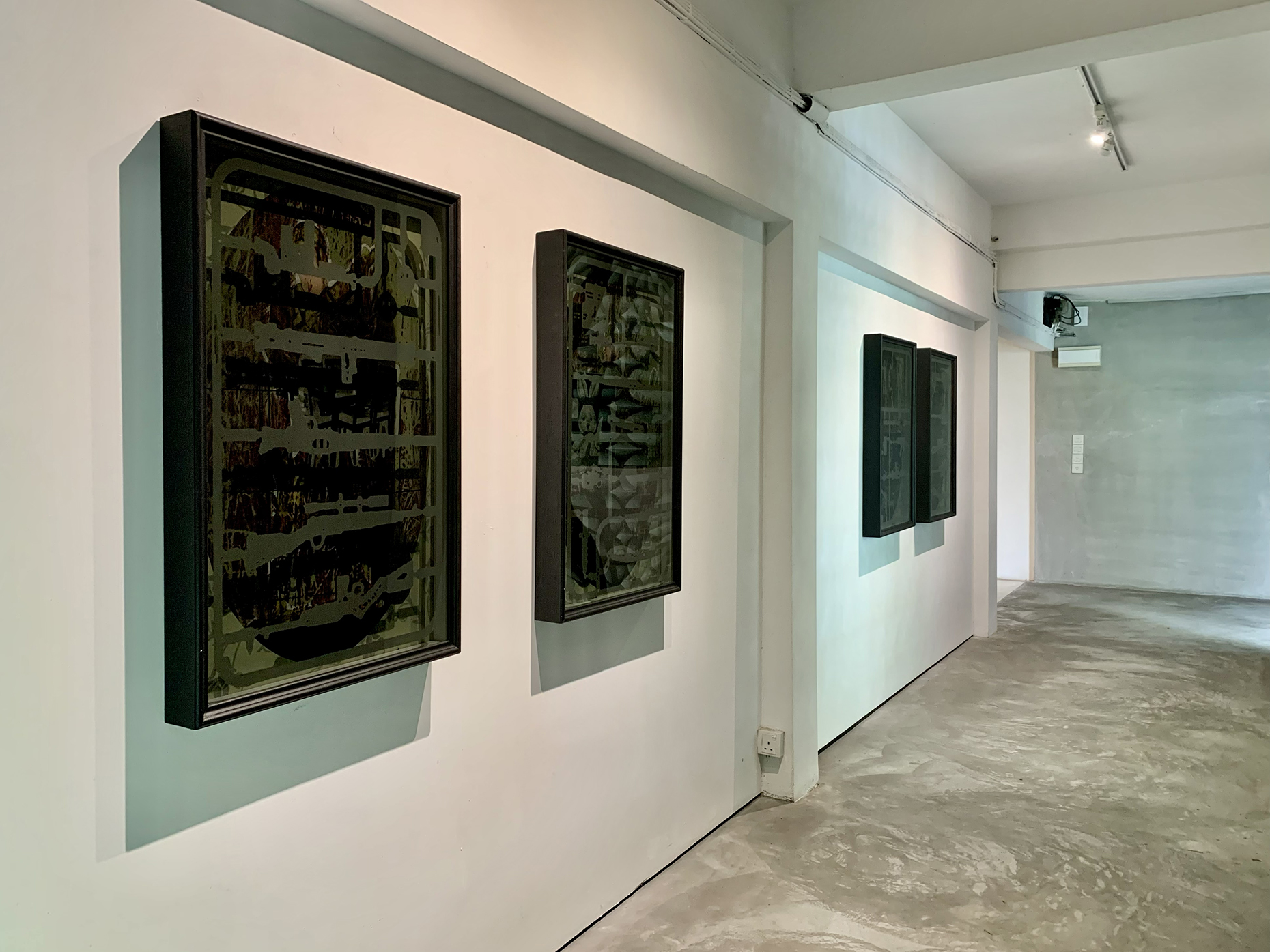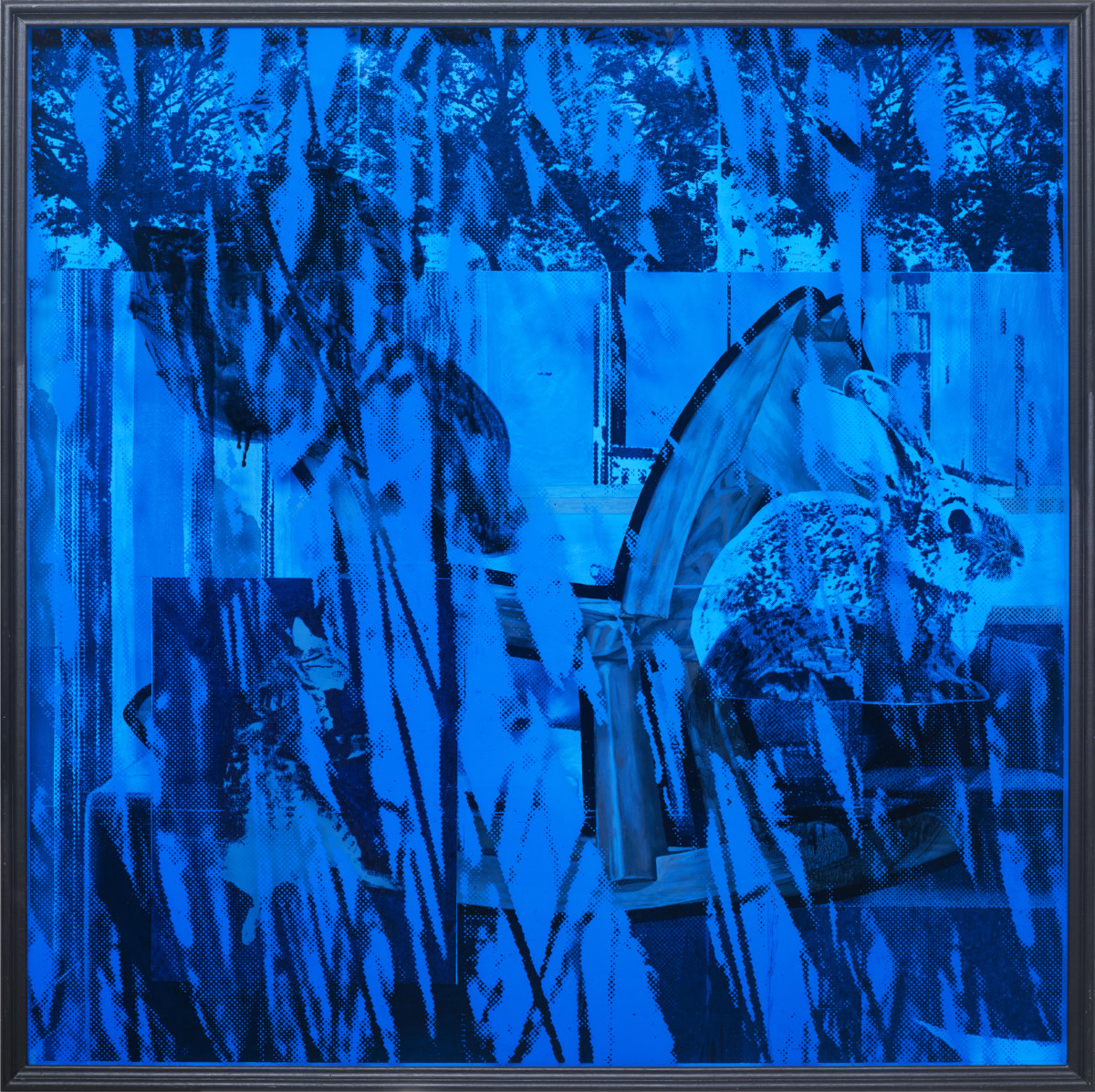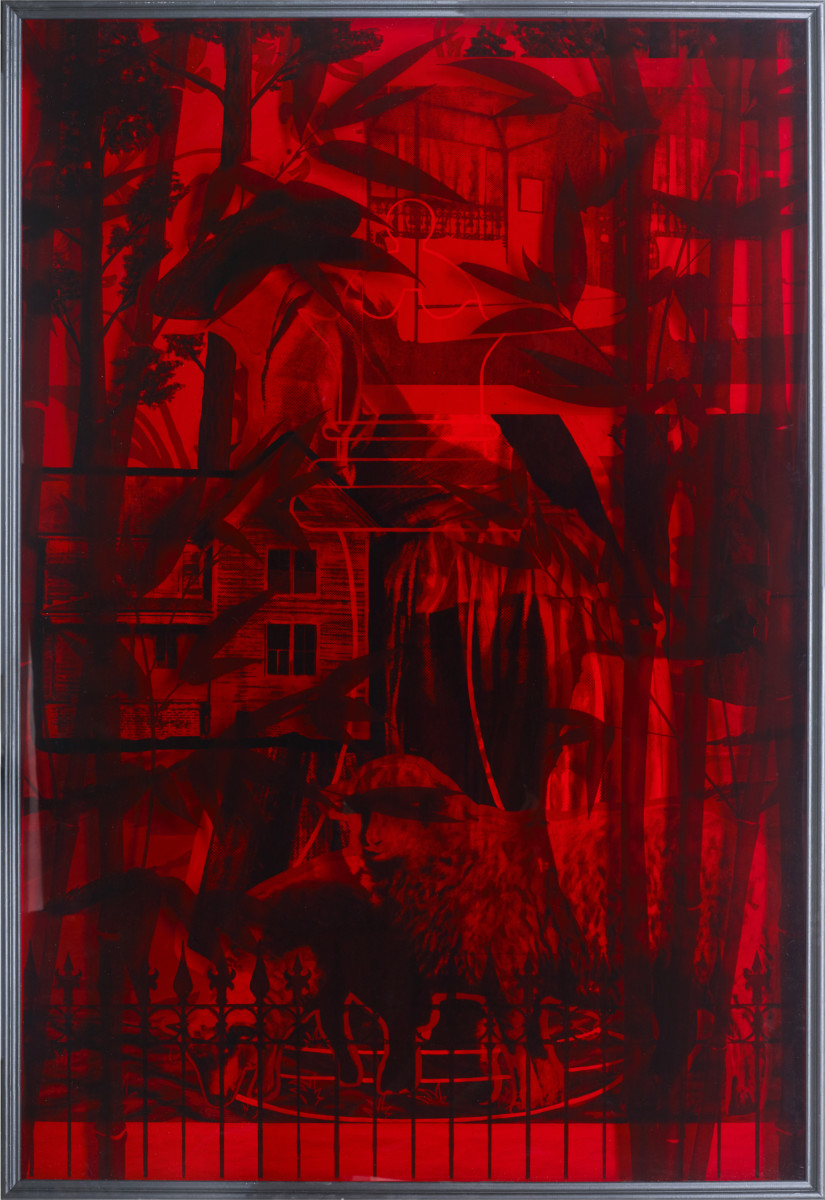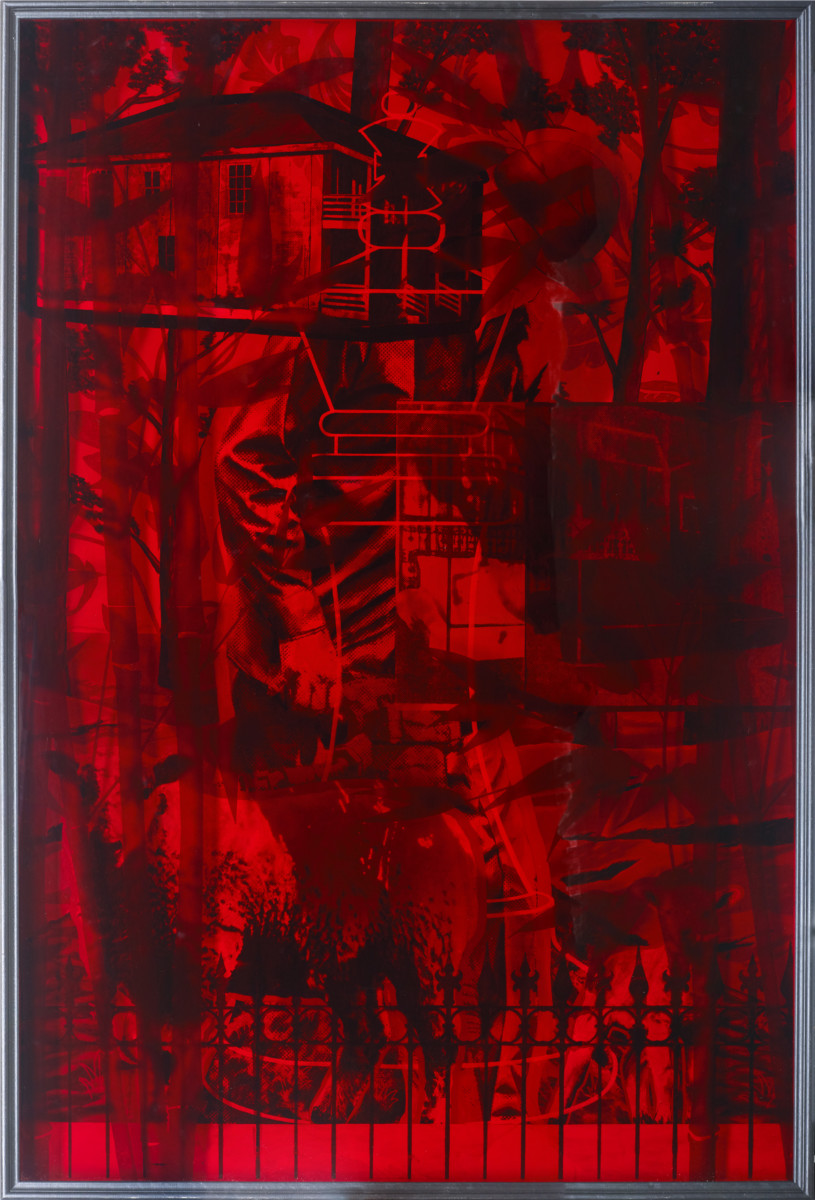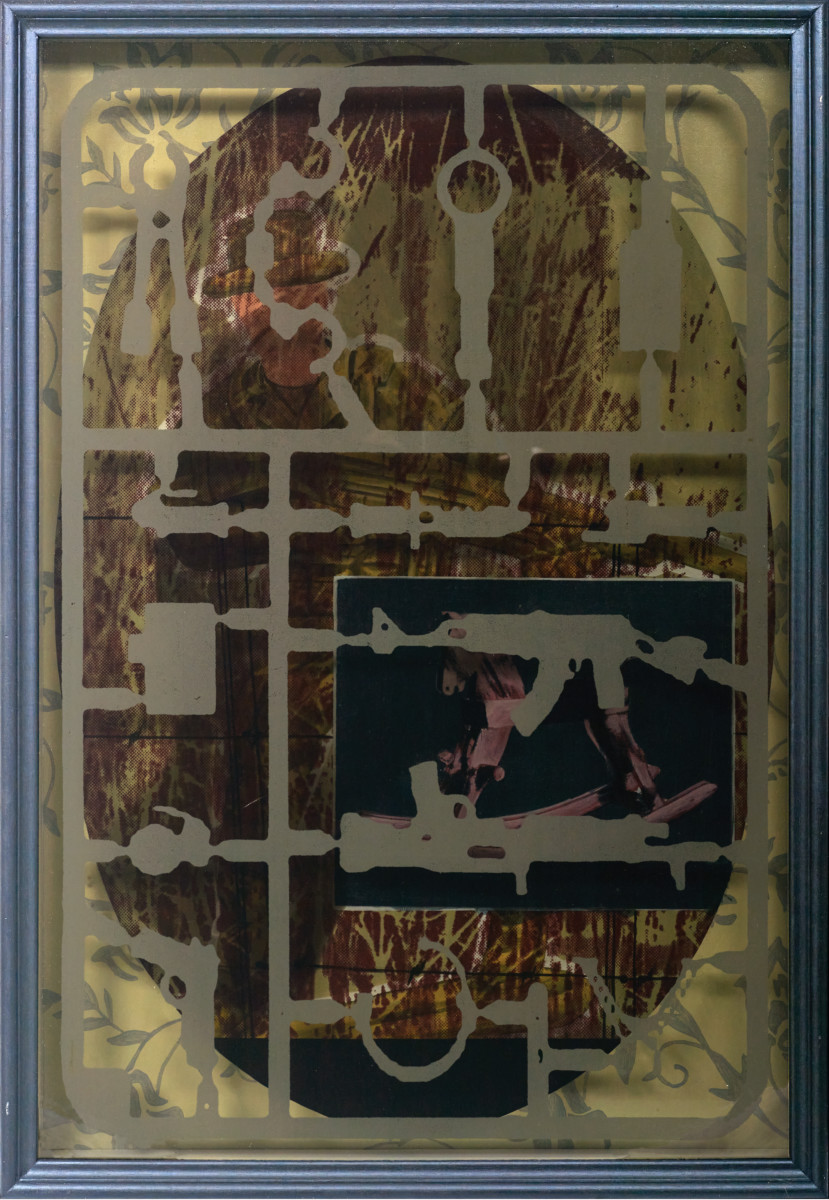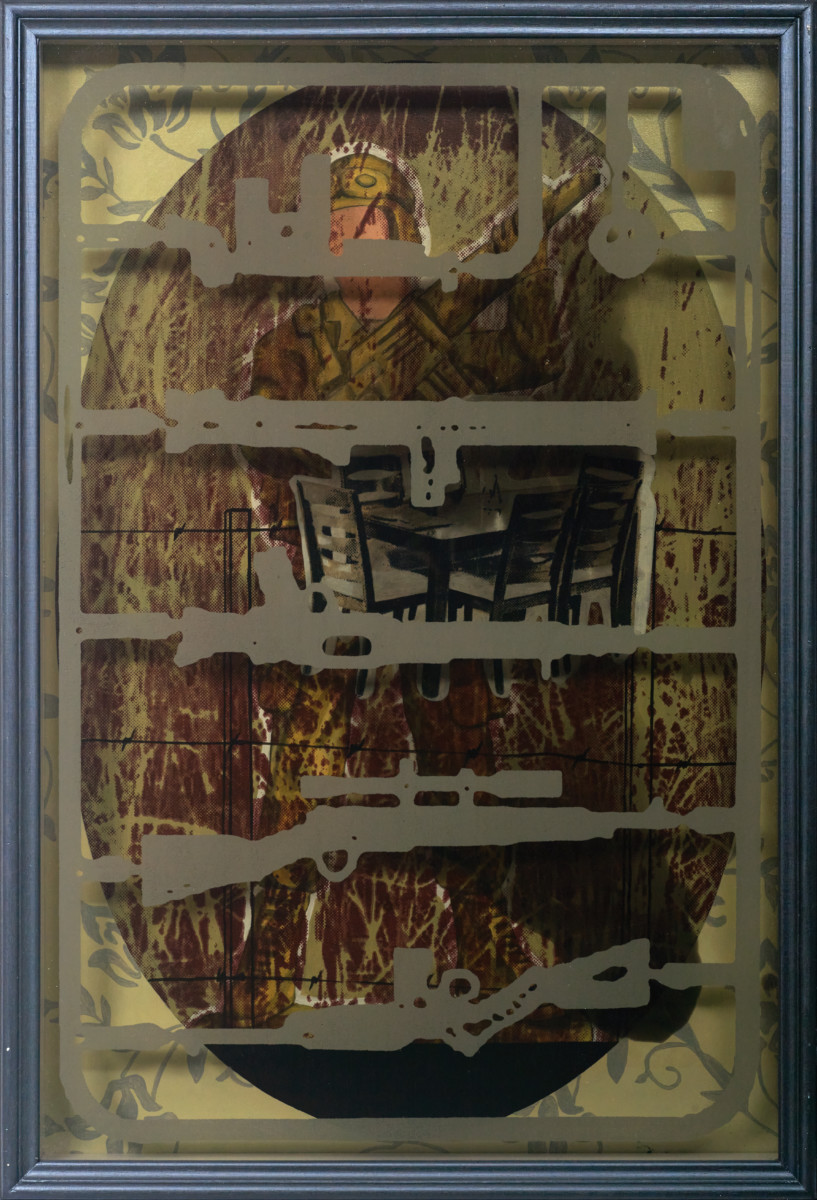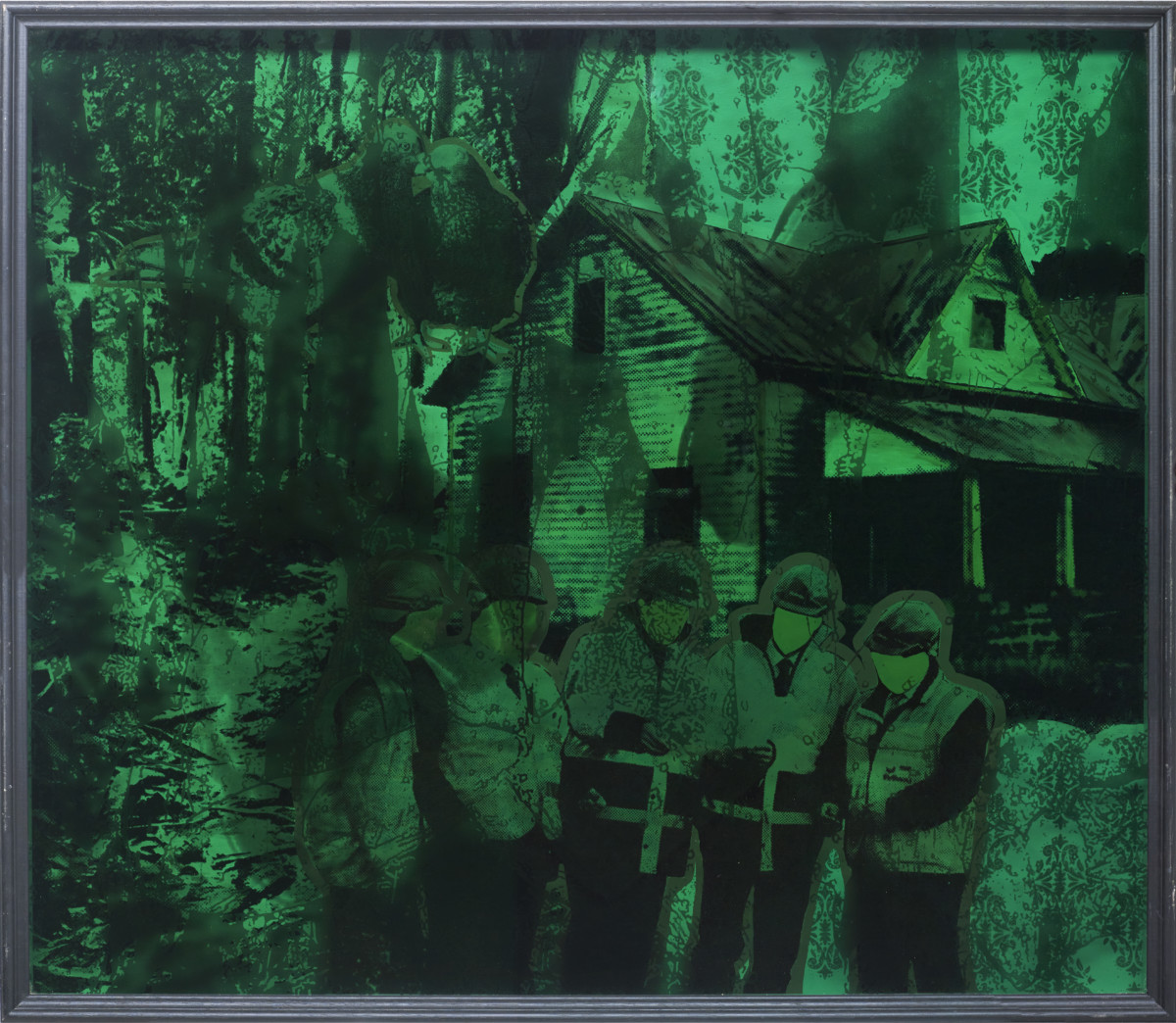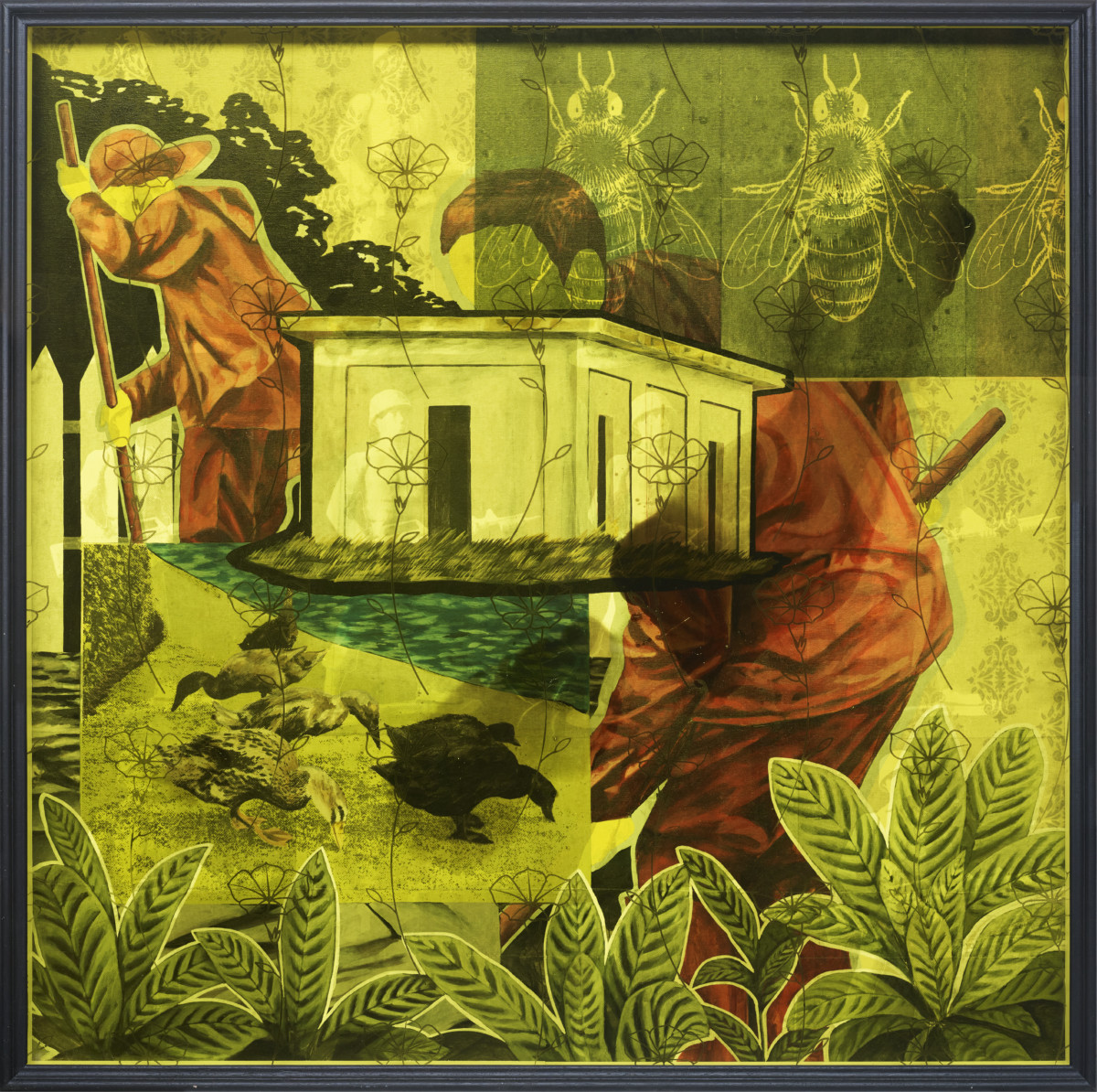Self – Evident
Solo Exhibition:-
Syahmi Jamaluddin
15th February – 11th March 2022
Core Design Gallery, Subang Jaya
*Click on images to zoom in
Time is relative, time is a construct, time is a flat circle, time is of the essence.
There are a lot of famous references when it comes to perceiving time. More often than not we hear of these phrases whenever a specific circumstance happens. The first phrase mentioned is usually associated with scientific understanding. The second is a system that is believed to be socially constructed. The third refers to repetitiveness or even eternally unchanging mechanism. The fourth always speaks of urgency.
With Syahmi’s Self Evident, his second solo show after Boundary: Dream & Survival, I cannot help but think along with these phrases about time. Syahmi’s work initially encapsulates the idea of hybridising printmaking and painting which he excels in constructing, consequently unearthing a fresh way of seeing — an art style that is filled with congested, overlapping images, but also is rich with metaphors that result in an abundance of interpretations.
There is a timely difference between then and now when it comes to deducing the progression of his works; a seasonable effort that whilst created in a similar way, the core intentions has diverted to a broadening, shifting worldview. According to Syahmi, who has been a full-time artist in recent years, the time has felt increasingly constraining. Syahmi’s way of working regardless of the excruciating times of the pandemic has affected and transformed the context of his work as time passes by.
He emerged with a new body of works that implies a ‘seasonal’ change in his own thought processes as a result of multiple events that have happened during the pandemic. Recently married with a newborn kid in tow, Syahmi reevaluates his life in a set of coloured order; a deeper metaphorical look at how he sees himself as an emerging artist operates as well as the art ecosystem that he has been relying on in order to achieve a balance between the time for artmaking and the time spends with his new family.
Syahmi’s understanding of the concept of time by being an artist first came up when he expressed interest in the way the art ecosystem is navigated during the pandemic. The idea to put up exhibitions after exhibitions by galleries through online platforms, the limited operation for artworks transportation, the excessive use of social media to share about current shows; whatever steps that are typically involved when running a show — it has felt, to Syahmi, an admirable process to witness. The drastic change of circumventing the restrictive pandemic is a starting point for Syahmi to reflect the important and crucial process of the behind the scenes, so to speak.
There is a situational narrative here to explore as well as Syahmi believes that adapting to the change of pace of the art ecosystem has either disrupt or regulate how an artist works. We are reaching a recovery phase that would lead to living in an endemic era and for Syahmi who himself has been on a reflective journey on his own path as a full-time artist, it is not the settling down with said label that he conforms to, but rather on the moving forward part of it.
A few visits to his studio turned into a learning curve; there was a lot to digest — simply seeing the tedious process to develop his works has felt enlightening. The time consumed to construct each piece was rather a deliberate choice. Red, blue, green, yellow, and black. The seasonal implication of using these colours is emphasised by the images veiled behind the acrylic glasses. In Self-Evident, Syahmi works with composing images according to how he observes the states of living in a pandemic as a full-time artist, a father and a husband.
Trust the Path with Hope and Love no.1 and no.2 are overcast with a red hue; images of a couple — presumably husband and wife — is seen working hard together, albeit separated. A white outline of chess pieces denotes a King and a Queen on top of them, a subtle play of irony in the status quo to how the husband and wife are perceived with adorning working clothes, yet is unfittingly stamped on as ‘royals’. The accompanying print collages of sheep and a house suggested that both husband and wife have similar goals and dreams — perhaps to someday own a house, as well as breeding sheep to supply for livestock.
Similarly, the image of hard-working men is encased within Morning Glory. The yellow acrylic glass is insinuated as the time of dawn, the opposite to the Trust the Path with Hope and Love which is dusk. In an oblique sense, Syahmi indicates the idea of the people who work from dusk till dawn without rest as something admirable as he intends to apply the same efforts as an artist. Amidst the pandemic, the recovery time for everyone to get back on the swing of things is different. For those whose works require to be on the field, it became a moot point when a lot of places are restricted. In contrast for artists who are almost always secluded inside their studios, to work is possible, but to exhibit said works is another matter.
Syahmi likes playing with the contradictive nature of things — the pros and cons to how things are working for certain professions especially when it aggregates unexpected hardships. Even for an artist like Syahmi to rely on the art ecosystem to push forward is not an easy task. Revenues are hard to achieve even for mid-career artists, let alone an emerging one. Syahmi’s understanding of the pandemic life has been rerouted by steering the direction according to the set timeline — the day for working in the studio, the evening for the family.
In The Man Who Is Willing to Do, Syahmi resorted to the waiting of nightfalls that are supposed to be the time for rest and recovery, yet the images that are presented in the hue of blackness is of a toy soldier hidden inside tall grasses encompassing the images of a plush doll, a wooden horse toy, a bed and a dinner table, suggestive of the need to still be alert to ‘protect’ these seemingly fragile ‘moments’ i.e. sleeping, eating or playing. Perhaps life as a father and a husband to a new family is a dawning prospect for Syahmi to always be on guard. By touching the surface of protection, Syahmi also learns that safety and security do not always guarantee a comfortable life.
We Love You no.1 and no.2 is perhaps one of the most personal pieces to interpret. Visibly, a plush bear doll is placed amongst images of butterflies and a window, signifying a form of expression of freedom. Since the pandemic, an outdoor experience is hard to attain. Having a young daughter that should have been able to play outside is reduced exponentially which has mounted to regret and resentment feeling in Syahmi as a parent. Partly because he could not do anything about the times we live in, and partly because the idea of going outside alone has become a morbid and depressive thought, especially when it concerns the health of his child. The rabbit and the doll that resides inside but yet ‘outside’ with the addition of plants and trees is a play of composition that describes Syahmi’s restlessness, despite the harmless subjects.
Temporary Foreigner no.1 and no.2 with the brilliant green that has shrouded the images inside rouses multiple contemplations — the horse, the tent, the gathering of men that have felt out of place and irrespective of the images Syahmi has chosen to depict his personal life. The acrylic glass which is printed with repressive and uncultivated grass images entails a show of privacy, perhaps referenced to a life that is secluded because of the pandemic or perhaps conveying the impression of immigrant workers that seek untimely opportunity during the pandemic, recalling back to how in history foreigners used to migrate to certain places with a tent to camped down and a horse as means of transportation. Syahmi’s inclination to frame his narratives are strongly dependent on the imageries, but with Temporary Foreigner, it has felt riddled with unknown emotions. Syahmi is not only pushing the depth in terms of the technicality but also reacts to it by way of contextualising it as a response to current times.
In the end, Syahmi’s way of committing to a new way of life informs him of the urgency in artmaking. Pressing on the key ideas of chasing the time, regulating the time, or even following the time, Syahmi is not only breaching issues in regards to the existing art ecosystem but also ruminates throughout the process by relating it to himself as an artist. Sacrificing the time to make ends meet is a notion that no one disagrees with, however, in any way an artist is supposed to work therein lies the need for a firm structure to support and helm the way always.

